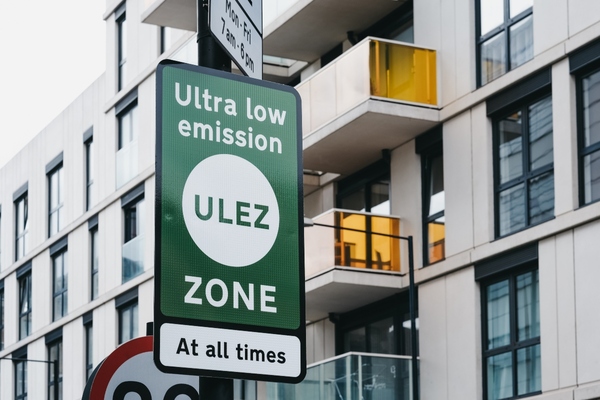Tfl launches consultation on London-wide expansion of Ulez
Proposals to expand the Ulez in August 2023 would see it extended to the current low emission zone boundary, covering almost the whole of London.
Transport for London (TfL) has launched a consultation on plans to expand the Ultra low emission zone (Ulez) to cover almost the whole of the UK capital from 29 August 2023.
New data estimates that the move would deter more than 100,000 of the most polluting cars a day.
Proposals to expand the Ulez London-wide on 29 August 2023 would see the zone extended to the current low emission zone boundary, covering almost the whole of London as well as a daily charge of £12.50 if drivers enter the zone in a non-compliant vehicle. It would operate 24 hours a day, seven days a week, 364 days a year (excluding Christmas Day).
Air quality crisis
Mayor of London Sadiq Khan and TfL have delivered a range of schemes to tackle the capital’s toxic air crisis, the climate emergency and traffic congestion, but further action across the city is required.
The current and long-term threat from toxic air pollution to public health is significant. All Londoners live in areas that breach the World Health Organisation (WHO) target for particulate matter and nitrogen dioxide; around 500,000 suffer from asthma and a similar number will develop diseases linked to dirty air over the next 30 years. In the same period, it is estimated harmful emissions will cost the NHS and social care £10.4bn if no further action is taken to improve air quality.
Additionally, traffic congestion continues to be a persistent problem in the capital. Last year, the cost to the London economy was estimated to be £5.1bn.
“The air Londoners breathe is so toxic it stunts children’s lungs, exacerbates chronic illness and contributes to thousands of premature deaths each year”
The mayor considered a range of options when deciding the next steps to take in dealing with the emergency facing the capital. In the short term, expanding the Ulez London-wide will have the biggest effect on emissions relative to the cost to Londoners as a whole, as well as helping to tackle the climate emergency and traffic congestion.
The current £12.50 daily charge level for cars, vans and motorbikes that do not meet the standards would be retained. This would be supported by a revision of the Mayor’s Transport Strategy, which is also part of this consultation. The consultation will also ask Londoners to help shape the future of road user charging in the capital.
This could include scrapping existing charges, such as the Congestion Charge, and replacing them with a single road user charging scheme that uses more sophisticated technology to make it as simple and fair as possible for Londoners.
If a larger zone were introduced, it would have a significant impact by the end of 2023. It is estimated that the number of cars not meeting the tough Ulez standards each day in outer London would fall from 160,000 to 46,000 and the number of vans from 42,000 to 26,000.
These proposals would mean the air around an additional 145 schools, mostly in outer London, would meet the interim WHO target for nitrogen dioxide. The changes would also see a further 340,000 Londoners living in areas meeting these international health-based standards.
The tough emission standards have, already succeeded in helping reduce nitrogen dioxide at the roadside by around half in central London. In outer London more than four out of five vehicles are already compliant with the Ulez standards.
TfL is working to clean up its services with more than 800 zero emission at tailpipe buses, making it the largest green fleet in western Europe. Strict licensing standards mean that over a third of black cabs are now zero emission capable. As part of the wider move to electric, all drivers are being supported to switch to the cleanest vehicles, with more than 10,000 charging points now within the M25, a third of the UK’s total.
TfL is also proposing to make it easier for people to pay the charge by removing the annual £10 per vehicle Auto Pay registration fee, while ensuring financial penalties for non-payment remain an effective deterrent by increasing the penalty by £20, or £10 if paid within 14 days.
Khan said: “The air Londoners breathe is so toxic it stunts children’s lungs, exacerbates chronic illness and contributes to thousands of premature deaths each year. More than half of the 500,000 Londoners with asthma live in outer London and all areas of London still breach safe levels of pollution.
“That’s why my proposals for expanding the ultra -low emission zone are the right thing to do. Air pollution is not just a central London issue and Londoners in the outer boroughs should be able to enjoy the clean air benefits the Ulez brings.
“We’re keen to hear from all Londoners, so please share your views on my plans to build a better London for everyone – a safer, fairer, greener and more prosperous city for all Londoners.”
- air quality
- climate action
- Climate change/Resilience
- congestion
- Energy & Environment
- London
- mobility
- Road
- Sustainable Development Goals
- Transport for London




Leave A Comment